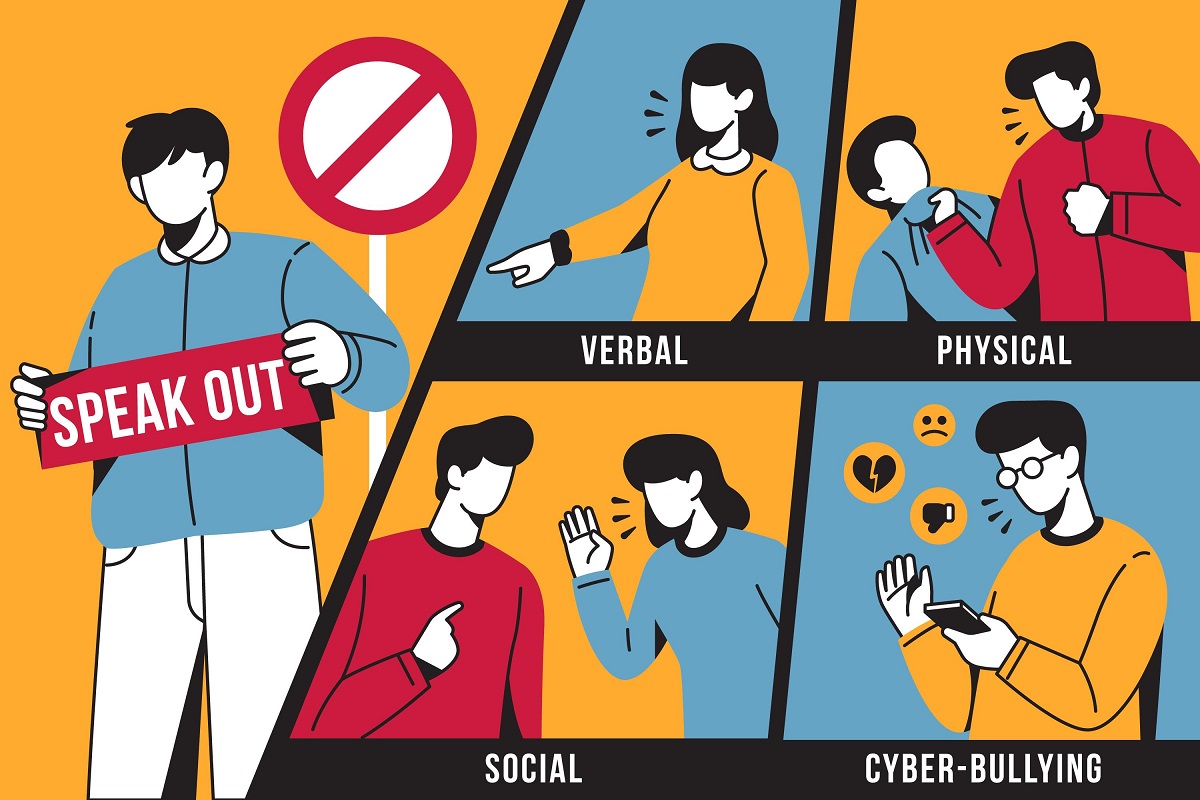By Clive Coutinho
Integrative Life & Wellness Coach, Luke Coutinho Holistic Healing Systems Pvt. Ltd.
Introduction
In today’s digital era, social media has undeniably become an influential force in the lives of young people. Platforms such as Facebook, Instagram, Twitter, and Snapchat have revolutionized the way we connect, communicate, and consume information. While social media offers numerous advantages, it also comes with a darker side that we must acknowledge and address.
Let’s take a look at some of the dangers that exist in the world of social media:
1. Cyberbullying: The Silent Threat
What is Cyberbullying?
In today’s digital age, cyberbullying has emerged as a silent threat that affects countless young individuals. Cyberbullying refers to the act of using electronic communication platforms, such as social media, to harass, intimidate, or harm others. The anonymity and ease of communication provided by social media have unfortunately made it a breeding ground for such malicious behaviour.
How Social Media Enables Cyberbullying
It is enabled in several ways. Creating fake profiles or hiding behind usernames gives bullies a sense of impunity, making it easier for them to target their victims. The public nature of social media amplifies the reach of hurtful messages, as they can quickly spread and gain an audience beyond the intended target.
The Psychological and Emotional Impact on Victims
The extent of cyberbullying on its victims is profound. Constant exposure to derogatory comments, threats, and humiliation can lead to heightened levels of stress, anxiety, and depression. The victims may experience a decline in self-esteem and self-worth as they internalize the negative messages directed toward them. In severe cases, cyberbullying is even linked to suicidal ideation and self-harm.
2. Online Predators: The Hidden Danger
While social media platforms have revolutionized the way we connect and communicate, they have also provided opportunities for online predators to exploit and harm our youth. The hidden danger of online predators is a serious concern.
How Social Media Provides Opportunities for Predators
Platforms provide a virtual playground for predators to target vulnerable individuals. The anonymity and ease of creating fake profiles make it easier for predators to disguise their true identities and gain the trust of young users. They exploit the open nature of social media to initiate conversations and establish relationships with unsuspecting victims.
The Risks of Online Grooming and Exploitation
Online grooming refers to the process by which predators build trust and manipulate young individuals, often with the intent of engaging in sexual exploitation or abuse. Through deceptive tactics and manipulation, predators establish emotional connections with their victims, gradually crossing boundaries and coercing them into harmful situations. The consequences of online grooming can be devastating, leading to long-lasting psychological and emotional trauma.
Importance of Educating Youth about Online Safety
To combat the dangers of online predators, it is crucial to educate young individuals about online safety and the risks associated with engaging with strangers on social media. Teaching them about the signs of grooming, the importance of privacy settings, and the potential consequences of sharing personal information can empower them to make informed decisions and protect themselves online.
Our educational initiatives should also include guidance on responsible online behaviour, emphasizing the importance of critical thinking, skepticism, and verifying the authenticity of online contacts. With knowledge and awareness, we can reduce their vulnerability and help them navigate the digital landscape safely.
Encouraging Open Communication and Reporting Suspicious Activities
- Creating a culture of open communication is vital in addressing the threat of online predators. Youth should be encouraged to talk openly with trusted adults about their online experiences, any concerns they may have, and any interactions that make them uncomfortable or raise suspicions. Establishing a supportive and non-judgmental environment will foster trust and ensure that they feel safe reporting any suspicious activities.
- Furthermore, it is crucial to provide accessible reporting mechanisms on social media platforms and other online platforms to allow users to easily report abusive or predatory behaviour. Timely reporting of suspicious activities can enable authorities to take necessary action and protect potential victims.
- By combining education, open communication, and reporting mechanisms, we can collectively work towards creating a safer online environment for today’s youth, minimizing the risks posed by online predators. Ensuring their safety and well-being must be a top priority, and it is upon us as adults and responsible members of society to remain vigilant and proactive in combating this hidden danger.
3. Online Harassment and Invasion of Privacy: The Price of Sharing
The pervasive use of social media exposes our youth to risks such as online harassment and invasion of privacy. The price of sharing personal information and engaging on social media platforms can be high, requiring us to be vigilant and proactive in safeguarding our privacy.
Associated Privacy Risks
Platforms often require users to share personal information, including names, locations, and even intimate details of their lives. This information, if mishandled or accessed by malicious individuals, can lead to privacy breaches, identity theft, or cyber-stalking. Additionally, it can amplify the impact of privacy violations, as information spreads rapidly and can be difficult to control.
Examples of Online Harassment and Consequences
Online harassment encompasses a range of harmful behaviours, including cyberbullying, hate speech, doxxing (revealing personal information), and non-consensual sharing of intimate images (often referred to as “revenge porn”). These consequences can be severe, leading to emotional distress, psychological trauma, damage to reputation, and even physical harm.
Safeguarding Personal Information and Practicing Online Safety
To protect ourselves and our youth from online harassment and privacy invasion, it is crucial to adopt effective strategies for online safety:
1. Review privacy settings
Familiarize yourself with the privacy settings of social media platforms and ensure they are configured to your comfort level. Limit the visibility of personal information and restrict access to your posts and profile to trusted connections.
2. Be mindful of what you share
Exercise caution when sharing personal information or intimate details online. Consider the potential implications and long-term consequences of sharing certain content, as once it’s out there, it may be challenging to regain control.
3. Think before accepting friend requests or engaging with strangers
Exercise caution when accepting friend requests from unknown individuals. Be mindful of sharing personal information or engaging in conversations with people you do not know in real life. Remember, not everyone online may have good intentions.
4. Regularly review and update passwords
Ensure that your social media accounts have strong and unique passwords. Regularly update them to minimize the risk of unauthorized access.
Reporting and Addressing Online Harassment Incidents.
If you encounter online harassment or witness it happening to others, it is essential to take action:
1. Document Evidence
Preserve any evidence of online harassment, such as screenshots, messages, or any other relevant information. This documentation can be crucial when reporting the incident.
2. Report the Harassment
Utilize reporting mechanisms provided by social media platforms to report instances of harassment. Most platforms have dedicated reporting options for various types of abuse and harassment. Prompt reporting increases the chances of swift action being taken against the harasser.
3. Seek Support
Reach out to trusted friends, family members, or professionals for emotional support and guidance. Sharing your experience can provide reassurance and help you navigate the situation effectively.
4. Involve Authorities if Necessary
In severe cases of online harassment or threats, involving law enforcement may be necessary. Local authorities can provide guidance and assistance in addressing the situation and ensuring your safety.
Your privacy and well-being are paramount, and it is crucial to assert your rights and seek support when faced with online harassment or invasion of privacy.
Conclusion
The dangers associated with social media as highlighted above are real, pervasive, and multi-faceted making it imperative to raise awareness about their impact on youth. By understanding the risks, we can better equip ourselves and young individuals to navigate the digital landscape responsibly. Raising awareness involves educating parents, educators, and young individuals about the potential pitfalls and guiding them toward healthy online habits and interactions.
About the Author:

Clive Coutinho is a Certified Life Coach from the International Coaching Federation. His proficiency is in the realm of human behavior and communication. Meticulous insight, emotional intelligence, and commitment are at his core, making every conversation with him engrossing, constructive, and entertaining.
For consultations, he can be contacted on:
Phone: +919049884135
Email: [email protected]
Website: https://www.lukecoutinho.com/consult_with_holistic_life_coach


